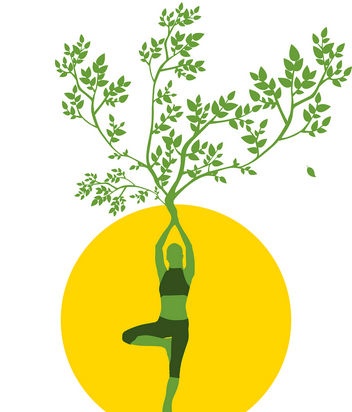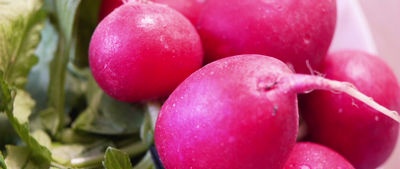|
 During their life, plants can absorb a considerable amount of mineral salts from the soil. For one day, plants growing on an area of about 1 hectare, on average, absorb the following minerals: During their life, plants can absorb a considerable amount of mineral salts from the soil. For one day, plants growing on an area of about 1 hectare, on average, absorb the following minerals:
- nitrogen - 1-2 kg;
- phosphorus - 0.25-0.5 kg;
- potassium - 2-4 kg;
- other elements - 2-4 kg.
Of course, it is clear that if the soil lacks nutrients and an acceptable amount of fertilizer is not applied, the development and growth of plants is largely inhibited.
It also happens that with sufficient fertilization, plants grow poorly. The fact is that, getting into the soil, fertilizers can pass into chemical compounds that are difficult for plants to access. Thus, the introduced phosphorus, combining on acidic soils with aluminum and iron, cannot be used by the plant. In the presence of large amounts of calcium and magnesium in the soil, the added potassium is bound, as a result, the plant feels potassium starvation.
 How do you know if a plant needs nutrients? The appearance of plants can tell a lot about this. How do you know if a plant needs nutrients? The appearance of plants can tell a lot about this.
If the plant lacks nitrogen, the emerald green leaves turn pale, turn yellow-green. In maize, near the midrib of a leaf, tissue begins to die off, and the edges of the leaves curl. Cabbage leaves acquire an unusual color. The lower leaves turn pink or orange during nitrogen starvation.
With phosphorus starvation of plants, the leaves acquire a dark green color, and turn purple at the edges. If at this time you do not feed with phosphorus fertilizers, the edges of the leaves turn brown and die off. In potatoes, not only the color of the leaves changes, but they begin to move away from the stems at an acute angle.
Sometimes in the field such a picture is observed. Plants received enough water, but nevertheless their leaves are sluggish, as if suffering from a lack of water. Repeated watering does not give positive results, since there is not enough potash fertilizers in the soil. On closer inspection, it is easy to notice a brown or brown color at the edges of the leaves, similar to a burn. In potatoes, the leaves become wrinkled, and a brown color appears on the edges of the leaves. A similar picture is observed on the leaves of beans, black currants and other plants.
A completely different kind of leaves in plants with a lack of magnesium. As you know, magnesium is part of the green pigment - chlorophyll. It is therefore no coincidence that when plants are not supplied with magnesium, signs of starvation appear primarily on the leaves. Initially, this manifests itself on the leaves of the lower tier, since magnesium coming from the soil passes along the veins of the leaf and then quickly moves to the leaves located above. This also explains that with a lack of magnesium, the veins retain a green color, while in the tissues between them, depending on the type of plant, a yellow, orange, red or purple color appears.
When plants are not supplied with iron, the leaves lose chlorophyll and therefore look almost white, i.e., chlorotic.
With a lack of boron, the leaves turn pale, the growth points die off, the formation of fruits and seeds is delayed, and if flowering occurs, then there is a massive loss of ovaries. Have sugar beet this causes a disease known as heart rot, and the cauliflower has brown spots that can then rot.
Plants that are not provided with manganese have a peculiar appearance. The leaves of such plants have a patterned appearance, since chlorophyll is preserved in the veins, and between the veins, the tissues lose their green color.
In the case of copper starvation, the leaves are chlorotic, withered.Stem growth is stunted and seed formation is poor. In a pear, the leaves have an ugly appearance, their edges turn brown.
With a lack of zinc in the apple tree in the spring, rosettes of small twisted leaves are formed - a phenomenon known as "small-leaved", and in corn the disease "white sprouts" develops, since the formation of chlorophyll is delayed.
It has long been known that sometimes yellow spots appear on the leaves of citrus crops, and then leaves fall off. Known as yellow spot, this disease is caused by a lack of molybdenum in plants. Have clover leaves curl downward and become reddish-brown in color. Something similar is observed on the leaves of tomatoes.
 But such a diagnosis does not fully satisfy the practice. The fact is that the external manifestation of a lack of nutrients in plants is the result of complex violations of internal processes. Sometimes they are so large that even if the plant receives the necessary fertilizers, it is no longer able to correct the violations that have occurred. For example, if the ovaries begin to fall off the plants, then feeding will not save those of them, which have already formed a separating layer. And it is no coincidence that the researchers set themselves the task of finding such methods for determining the nutritional needs of plants that would talk about this much earlier than the outward signs of plant starvation appear. But such a diagnosis does not fully satisfy the practice. The fact is that the external manifestation of a lack of nutrients in plants is the result of complex violations of internal processes. Sometimes they are so large that even if the plant receives the necessary fertilizers, it is no longer able to correct the violations that have occurred. For example, if the ovaries begin to fall off the plants, then feeding will not save those of them, which have already formed a separating layer. And it is no coincidence that the researchers set themselves the task of finding such methods for determining the nutritional needs of plants that would talk about this much earlier than the outward signs of plant starvation appear.
In recent years, a method has been proposed for the chemical analysis of cell sap. As you know, it accumulates a variety of substances, including mineral salts. And if the plant absorbs these salts from the soil in sufficient quantities, then they accumulate in large quantities in the cell sap. If the soil lacks nutrients and the plant is starving, then little of them accumulates in the cell sap.
Thus, having determined the content of nitrogen, phosphorus and other elements in the cell sap, one can judge the supply of plants with one or another element. This is done with the help of a field laboratory - Magnitsky's bag.
Having learned what the plant needs, a person, by applying the appropriate fertilizers, satisfies its need. And the plant quickly responds to this concern. The color of the leaves takes on a normal color, plant growth resumes, and they give a high yield.
K. E. Ovcharov
|
 During their life, plants can absorb a considerable amount of mineral salts from the soil. For one day, plants growing on an area of about 1 hectare, on average, absorb the following minerals:
During their life, plants can absorb a considerable amount of mineral salts from the soil. For one day, plants growing on an area of about 1 hectare, on average, absorb the following minerals: How do you know if a plant needs nutrients? The appearance of plants can tell a lot about this.
How do you know if a plant needs nutrients? The appearance of plants can tell a lot about this. But such a diagnosis does not fully satisfy the practice. The fact is that the external manifestation of a lack of nutrients in plants is the result of complex violations of internal processes. Sometimes they are so large that even if the plant receives the necessary fertilizers, it is no longer able to correct the violations that have occurred. For example, if the ovaries begin to fall off the plants, then feeding will not save those of them, which have already formed a separating layer. And it is no coincidence that the researchers set themselves the task of finding such methods for determining the nutritional needs of plants that would talk about this much earlier than the outward signs of plant starvation appear.
But such a diagnosis does not fully satisfy the practice. The fact is that the external manifestation of a lack of nutrients in plants is the result of complex violations of internal processes. Sometimes they are so large that even if the plant receives the necessary fertilizers, it is no longer able to correct the violations that have occurred. For example, if the ovaries begin to fall off the plants, then feeding will not save those of them, which have already formed a separating layer. And it is no coincidence that the researchers set themselves the task of finding such methods for determining the nutritional needs of plants that would talk about this much earlier than the outward signs of plant starvation appear.









